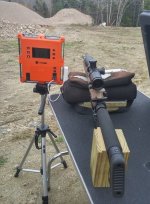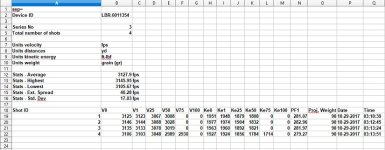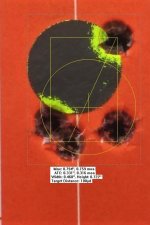stagpanther
New member
Couldn't help myself--despite developing storm winds I decided to go out and test my new labradar--I just happened to have whipped up a new test ladder of 90 gr sciroccos for new 6mm creedmoor build.

First off, let me say this is the most fun you can have with your earplugs on! Despite what I read and heard--took me all of about 90 seconds to get it set up and positioned next to my gun. Menu system is pretty intuitive and setting the settings was very easy.
Despite what I read and heard--took me all of about 90 seconds to get it set up and positioned next to my gun. Menu system is pretty intuitive and setting the settings was very easy.
Everything worked fine, except for a couple of "rookie mistakes" I made. Because I was worried (unnecessarily) about battery drain--I turned the unit off between each series of shots. Naturally, on half the series I forgot to arm the radar before taking the first shot. Yup--duh x 3. I finally said the heck with it and adjusted the settings to keep the screen and radar armed long enough to shoot the whole series. Related to this--the only small quips I have are 1) it would be nice to have a stopwatch counter on the display; and 2) It would also be nice to have a "armed" and "not armed" text field on the display--mostly for old dotards like me who can't get the hang of pushing the button to arm automatically.
Shooting is so fun with the radar I forgot to really time my shots--and also didn't notice that the timing sleeve on the atlas compensator was loose and rotating--changing the muzzle timing. Oh well.
Here's 42.4 grs of RL 17 driving 90gr sciroccos

And the corresponding data download

First off, let me say this is the most fun you can have with your earplugs on!
Everything worked fine, except for a couple of "rookie mistakes" I made. Because I was worried (unnecessarily) about battery drain--I turned the unit off between each series of shots. Naturally, on half the series I forgot to arm the radar before taking the first shot. Yup--duh x 3. I finally said the heck with it and adjusted the settings to keep the screen and radar armed long enough to shoot the whole series. Related to this--the only small quips I have are 1) it would be nice to have a stopwatch counter on the display; and 2) It would also be nice to have a "armed" and "not armed" text field on the display--mostly for old dotards like me who can't get the hang of pushing the button to arm automatically.
Shooting is so fun with the radar I forgot to really time my shots--and also didn't notice that the timing sleeve on the atlas compensator was loose and rotating--changing the muzzle timing. Oh well.
Here's 42.4 grs of RL 17 driving 90gr sciroccos
And the corresponding data download
Attachments
Last edited:



